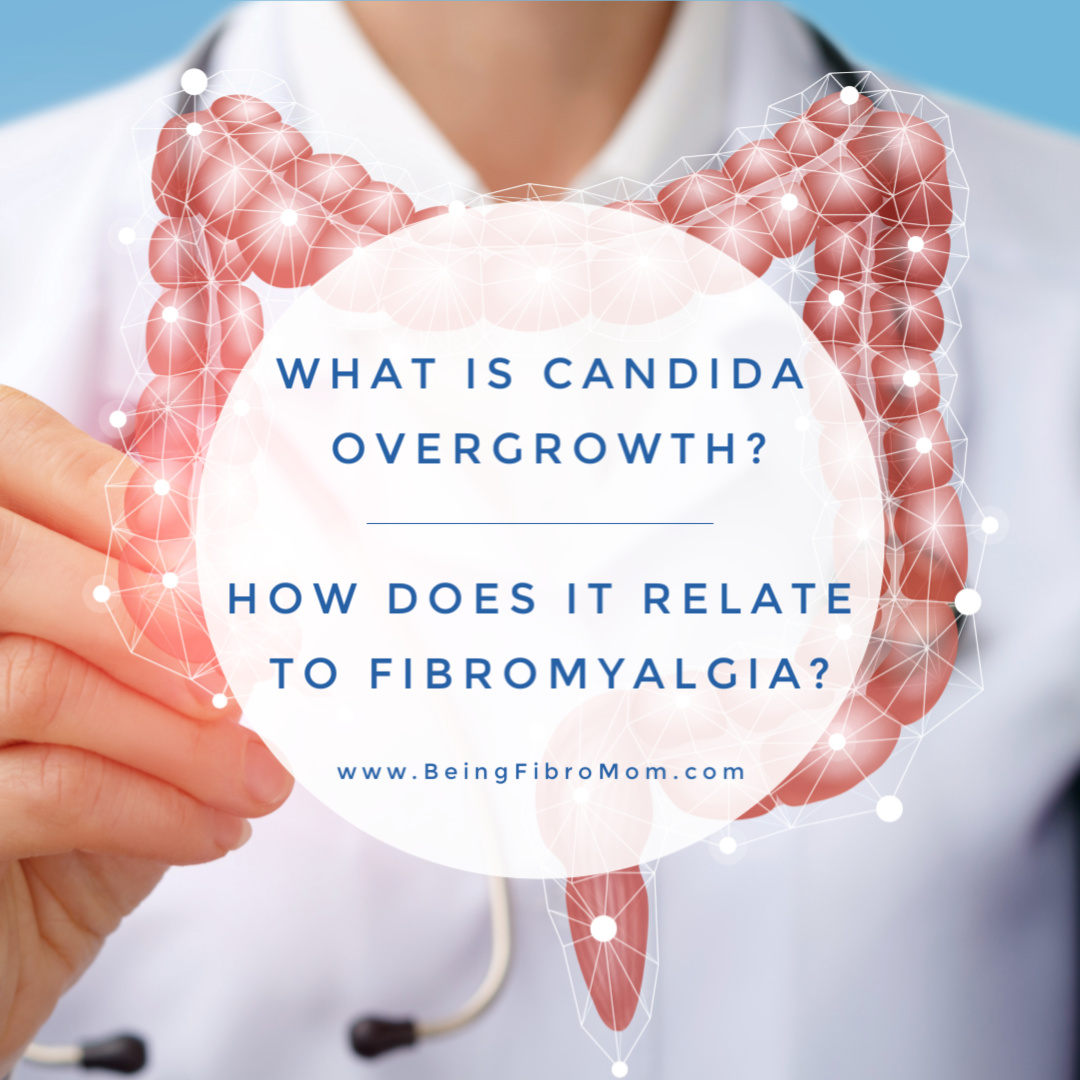Approximately 70% of people have Candida albicans in their guts and when there is an overproduction of what it, it’s called Candida overgrowth. But what is Candida overgrowth mean and how does it relate to fibromyalgia? In this video, Donna and I discuss Candida overgrowth, symptoms, triggers, treatments, and why someone living with fibromyalgia needs to know about it.
*Scroll to the bottom of this post for a video about this topic.

Why #fibromyalgia patients should be concerned about #Candida overgrowth and how it relates to fibromyalgia. #beingfibromom Share on X
Disclosure: I get commissions for purchases made through links in this post, but these are products I recommend and have verified and/or used.
What is Candida?
Candida albicans (referred to as Candida) is a fungus that lives in the gut flora (learn more about the gut flora). It helps with nutrient absorption and digestion IF maintained at proper levels.
What is Candida overgrowth?
Generally, it’s not a bad thing to have Candida because the good bacteria keeps it in check. However, when your immune system is compromised, it can grow out of control. When it overgrows, it establishes fast-growing colonies and biofilms and will dominate the gut.
It can damage the intestinal lining, but it does not enter the bloodstream (exception: immunocompromised patients). However, the toxins released by Candida CAN leave the gut. When the toxins invade the body, it can cause damage to body tissues and organs.
Symptoms of Candida overgrowth
Some of the symptoms include:
- White coating on the tongue
- Bad breath
- Loss of sex drive
- Brain fog
- Fatigue
- Bloating
- Digestive issues
- Repeated yeast infections
- Weight gain
- Joint pain
- Gas
- Headaches
- nausea

Causes of Candida Overgrowth
An overgrowth is usually a result of one of the following:
- eating high sugar foods,
- taking a course of antibiotics,
- experiencing a long period of stress, or
- taking oral contraceptives.
Treatments for Candida Overgrowth
Treatments are a little difficult because Candida can hide from the immune system. For example, it can raise the pH of the environment and switch from its yeast form to its fungal form. It can also physically change its cell walls making it virtually invisible to the body.
Treatments include:
- Low sugar diet: Sugar helps it to grow, so keeping a low sugar diet will help keep it in control. Also staying away from starchy vegetables and fruit can help with a more aggressive approach to treating it.
- Probiotics: Probiotics add good bacteria to help fight the Candida overgrowth. They also maintain natural acidity in the gut and stops the Candida from switching to its fungal form. Probiotics also boost the immune system (Here’s the probiotics Brandi uses). The product mentioned for candida overgrowth: Saccharomyces boulardii probiotic
- Antifungals: Antifungals work by disrupting Candida’s cell walls. They are most likely not going to help with overgrowth by itself but will help when used with a low sugar diet and probiotics. Prescription antifungals are available as well as natural antifungals such as garlic, rutabaga, coconut oil, and extra virgin olive oil.
Word of caution: When taking supplements, probiotics, or antifungals, be sure it does not contain maltodextrin, fructose, glucose, or sucrose. Read more.

Tests for Candida Overgrowth
It can be quite difficult to test for excess Candida. However, there are a few tests that can help determine if you are suffering from Candida overgrowth.
How does it relate to fibromyalgia?
The latest research has started to link fibromyalgia to immune system dysfunction. If the immune system isn’t working properly, then candida can flourish in the body. The immune system then works harder to expel the candida, leading to increased inflammation in the body, which in turn can aggravate pain, brain fog, and other symptoms of fibromyalgia. By treating candida overgrowth, you lighten the burden on the immune system, and hopefully, reduce fibro symptoms in the process.

One of my friends was feeling prolonged stress. After that it was discovered that she has candida. This post is very helpful and we must spread awareness about it. The right consultation is extremely important.